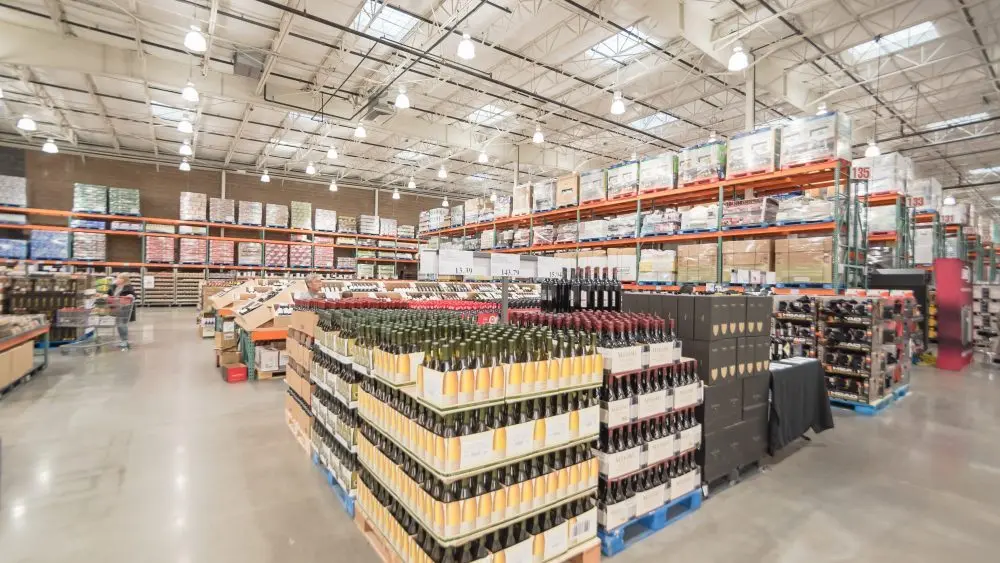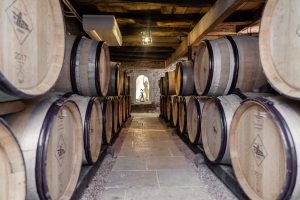
Two prominent wine-trade associations, Napa Valley Vintners and Sonoma County Vintners, are currently engaging with local legislators and the California Department of Insurance about ways to make insuring finished wine more affordable, a move that would benefit producers, consumers and distributors. A popular proposal is to create a group plan that wineries could opt into, with different prices depending on the volume and value of the wine.
“The cost of storing finished, bottled wine for small multigenerational family wineries has gone up 300% in the last two years,” Michael Haney, former executive director of Sonoma County Vintners and Sonoma County Vintners Foundation, told NBb earlier this summer. “Wineries that insure their products have resorted to purchasing multiple coverage plans or extremely expensive add-on options.
“I’ve heard of the wineries… buying eight different coverages for their wine.” [Editor’s note: Haney was
interviewed for this story prior to stepping down from SCV at the end of July.]
The good news is that in the last year the availability of wine insurance has increased. The farther the region gets from losses in the 2017 wildfires, the more interested insurers get in offering coverage. Local wineries are also improving their chances of getting insurance by making landscaping and building changes to reduce potential losses.
“Many wineries are storing their inventory in multiple locations. The downside is this option increases transportation and storage costs,” said Haney.
He said it is a goal to have insurers recognize and reward wineries for fire prevention and risk-reduction measures. This is not the norm yet; and such measures are expensive to implement.

Vintners are looking at the cost and benefits of those changes with insurers as the local industries take steps to lower the number of wineries having to purchase insurance from the FAIR plan, which is the state fire-insurance program for high-risk properties unable to secure private insurance. “The FAIR plan typically covers the building, but not necessarily the wine in the building,” Haney explained.
The mechanics of wine insurance
Bottled, finished wine is typically covered under a winery’s commercial property insurance, also known as business insurance. It is usually worth so much that it is not covered as part of the standard policy but through an add-on called an endorsement, floater or rider. A winery typically also purchases product insurance, also known as product liability insurance. This protects it against losses from contaminated or spoiled wine, as well as product recalls, according to Janet Ruiz, director of strategic communication for the Insurance Information Institute, the national trade association for the insurance industry.
Wineries typically keep finished wine in multiple, onsite locations, including a wine library, wine caves, the cellar, the tasting room, and a warehouse for loading onto trucks. A winery that hosts events like weddings also keeps wine in its kitchen and event space. Some wineries rent storage space from an outside warehouse.
Wherever wine is stored, the environment must be temperature controlled. Measures have to be in place to minimize the breakage of glass and/or the ballooning and explosion of cans. For example, a winery has to utilize pallets for stable transportation; and the pallets must be in good condition. It must also train its workers to perform operations like moving pallets correctly.
As a result, coverage of finished wine is inherently complex—and expensive. It is much higher than the cost of coverage for a less-temperature sensitive product like a granola bar that would be stored in only two onsite locations, the factory floor and the warehouse.
One of the primary factors in pricing for wine insurance is the base location for the winery and its own storage facilities. It matters whether a natural disaster recently occurred nearby. Jacob Ganzler, owner of Petaluma Insurance Agency in Petaluma, has a customer base that includes boutique grape growers and online wine retailers. He says events like the 2020 Glass Fire in Napa can strain the resources of insurers and reinsurers. This drives up prices across the board.
“Reinsurance, essentially insurance for insurance companies, plays a key role in determining the cost and availability of policies. The reinsurance market has been under strain in recent years due to rising disaster-related losses and a global tightening of available reinsurance capacity,” says Ganzler.
The distinction between admitted and non-admitted insurers is another factor that can affect premiums. An admitted insurer is required to file its rates and specific requirements with the state. It largely cannot change its rates without authorization from the state. A non-admitted insurer is not required to file rate approvals with the state.
“Non-admitted companies like Lloyd’s of London are subject to fewer regulatory restrictions. They can raise premiums more freely to reflect the market reality of the risks they’re covering. However, non-admitted insurance is typically more difficult to place. It typically requires more steps, and is often more expensive,” says Ganzler.
So far, Ganzler has seen only one client in the wine industry who has gone out of business. The action was due in part to rising insurance premiums and broader market conditions.
“That said, the higher costs for insurance are putting pressure on many businesses in the wine industry, especially operations that are more sensitive to increases in overhead,” says Ganzler.
Actions to help wineries
Wine storage facilities have the potential to alleviate some of the pressure. These warehouses tend to serve hundreds of clients, with each winery insuring its own products.
Wine storage facilities may have one or more locations. One of the benefits of using them is becoming more attractive to a distributor. The wine storage facility or the winery can bring the wine to a central point for distributors to pick up.
Still, building a better relationship with insurers is a current area of focus. North Bay wineries, like other wineries throughout the state, want major insurers to return to the state and work effectively with them, says Haney.
Robert P. Koch, president and CEO of the Wine Institute, the Sacramento-based advocacy group for California’s wine industry, says California wineries are grateful for any step that helps wineries stay protected. This is especially true in parts of the state where coverage is growing harder to access.
“Wineries aren’t just businesses, they’re farms, community employers and family legacies. Continued support isn’t just welcomed—it’s needed,“ says Koch.
